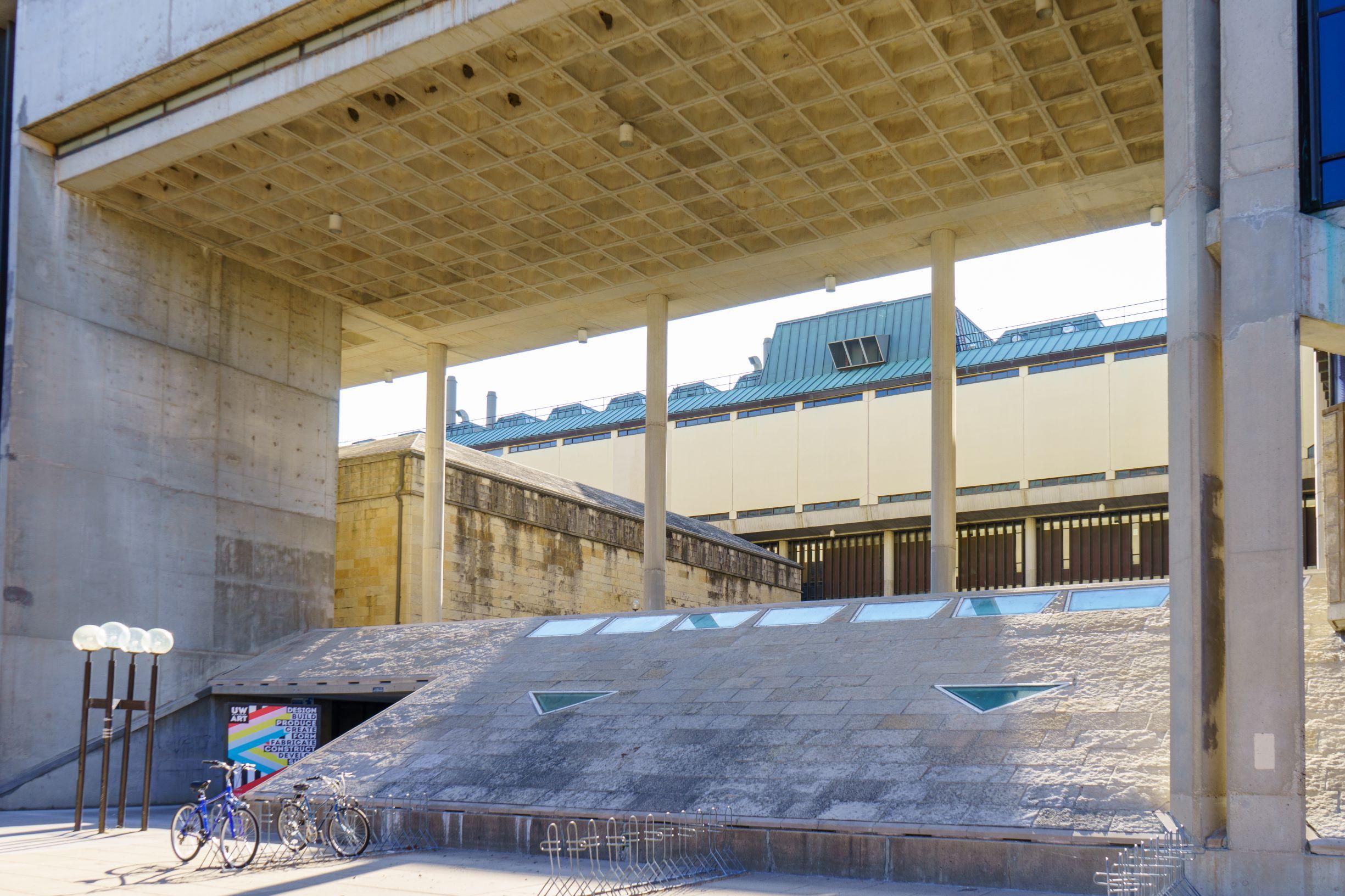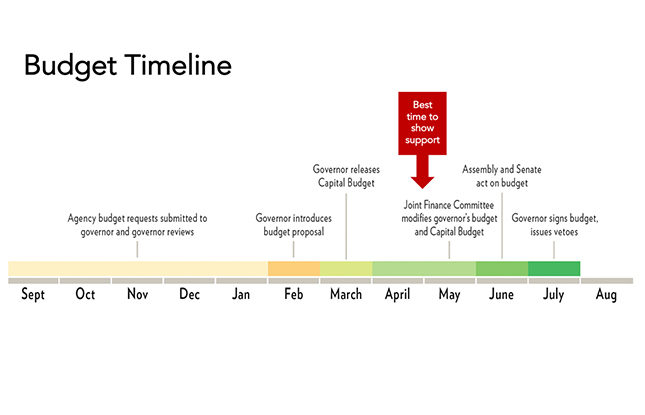For many students and alumni, the George L. Mosse Humanities Building is a rite of passage – its confusing passageways, windowless classrooms and claustrophobic, bunker-like ceilings presenting a universal hardship that almost everyone experiences at least once. The building does have its fans, many of whom point to it as a prime example of the “Brutalist” style of architecture. But for the majority of those who work and teach in the building, the shortcomings are glaring.
Leaky windows that ice over on the inside. Water pooling in offices (and lapping around the feet of the grand pianos). These are just two of the past and present problems plaguing the Mosse Humanities Building, which houses several College of Letters & Science departments (including history, art history, the Mead Witter School of Music, and the Mosse/Weinstein Center for Jewish Studies), along with many general assignment classrooms for the UW-Madison campus.

Constructed in 1966 for just under $10 million after many cost-cutting measures, one of which was to remove design features that left the building with its bare concrete exterior, the Humanities Building was renamed the George L. Mosse Humanities Building in 2000, to honor the distinguished professor of history who died in 1999. The university has wrestled for decades with the building’s unique maintenance challenges (chronicled in a Wisconsin State Journal article by Nico Savidge and a Madison magazine piece by Doug Moe, in recent years).
As part of its campus master plan, UW-Madison seeks to replace or renovate some of the buildings constructed in the 1960s, when more space was needed in a hurry. Some buildings are being renovated, such as Witte Residence Hall and the Chemistry Building. Others have outlived their usefulness, and the master plan calls for them to be slowly “decommissioned.” This includes the Mosse Humanities Building, which has no definite demolition date (it could be years away). The costs of repairing and maintaining the building now and into the future are projected to at least equal the cost of a new building.
As part of its 2021-23 biennial capital budget request to the State of Wisconsin, approved by the UW System Board of Regents last August, UW-Madison hopes for a new academic building to accommodate the classrooms and offices currently housed in the Mosse Humanities Building, as well as new space benefiting additional departments and programs as collaborative partners.

“The courses taught in the Mosse Humanities Building are the foundation for many UW majors, including Computer Sciences, Engineering and Business,” says Eric Wilcots, dean of the College of Letters & Science. “But the building doesn’t serve our students’ needs. Damage is widespread and the technological challenges limit our options for active and engaged learning. Our campus master plan calls for a new building that will modernize the student learning experience and build research connections on campus, better serving the needs of our growing undergraduate population."
More than 70,000 course credit hours were taught in Mosse Humanities’ outdated classrooms last year, serving 60 different UW-Madison departments and thousands of students. If the budget request is approved by the State of Wisconsin, the new, forward-looking space will support enrollment growth in high-demand fields and offer a highly collaborative and attractive learning environment for all. Wilcots says that the COVID-19 pandemic has reinforced the need for modern environments that adapt to various types of interactive learning.
The new academic building would be constructed at the corner of West Johnson and North Park streets, across from the Wisconsin School of Business. It would provide 1,800 seats in 19 classrooms.
“A new Letters & Science academic building will create new classrooms that support active learning, modern technology, and collaborative learning – elements proven to boost educational engagement and outcomes,” says UW-Madison Chancellor Rebecca Blank.
Very few general assignment classrooms have been built on campus since 1972. New classrooms are needed to support increases in undergraduate enrollment, enhanced student engagement, and improved student success outcomes.
The new academic building would be housed within the College of Letters & Science, the largest of UW–Madison’s 13 schools and colleges. The college teaches 65 percent of all UW-Madison undergraduate credit hours and 81 percent of all freshmen and sophomore credit hours. More than 20,000 students are enrolled in L&S (45 percent of total UW-Madison enrollment), who will join the ranks of nearly 220,000 L&S living alumni – 34 percent of whom reside in Wisconsin.
“We have a world-class university, and our students deserve classroom space that reflects the quality of their education,” says Wilcots. “Well-designed spaces inspire ideas, spark creativity and create connection. Those values are at the heart of the Letters & Science experience. In addition to solving critical space and technology challenges, this building will inspire, rather than intimidate. And that will make the learning experience more enjoyable, more productive and more equitable for all.”
View the UW-Madison budget website at https://budget.wisc.edu/letters-science-academic-building/
To learn more about how you can support the L&S Academic Building in Wisconsin’s 2021-2023 budget, become a UW advocate or contact UW-Madison State Relations.

